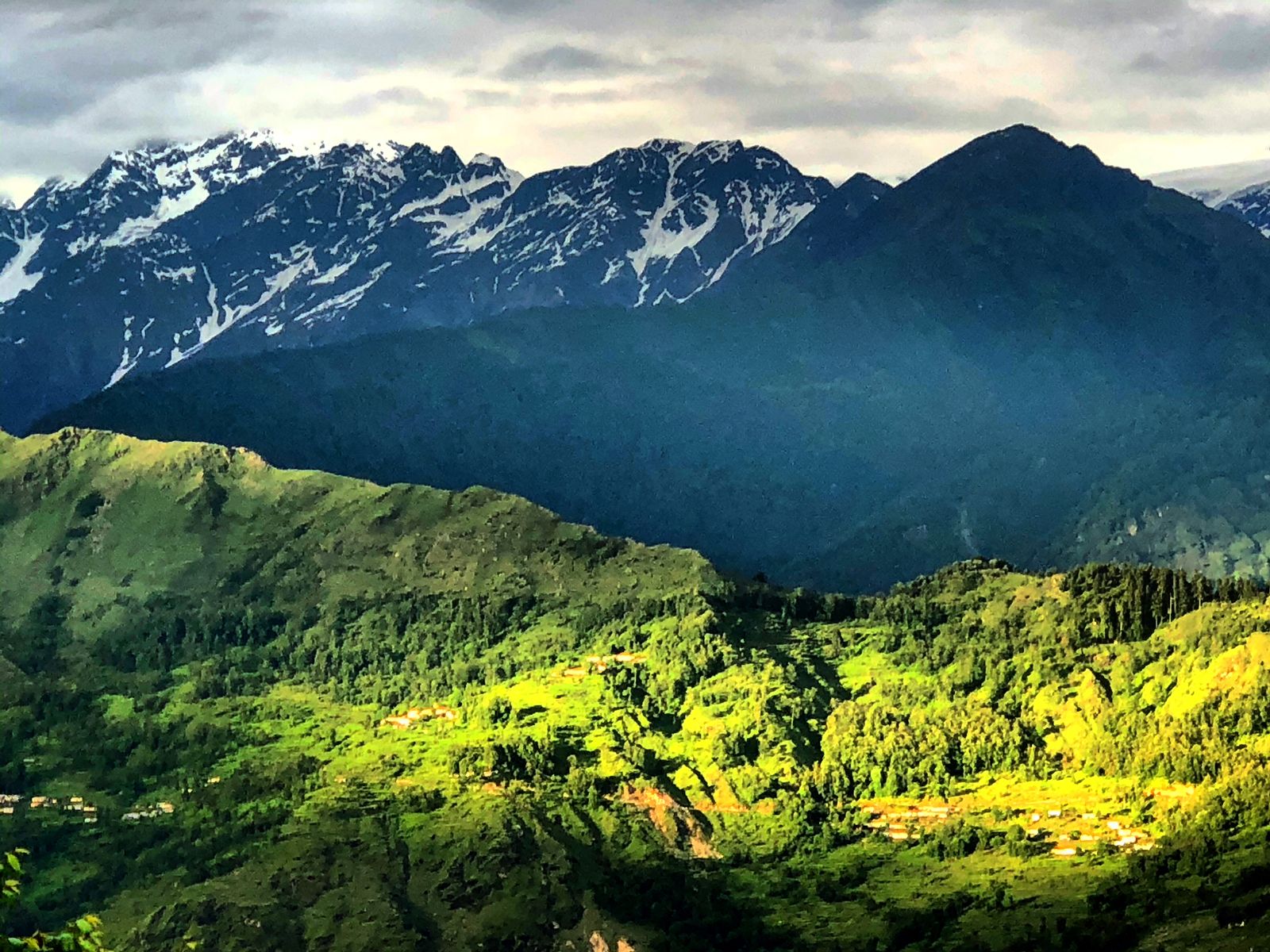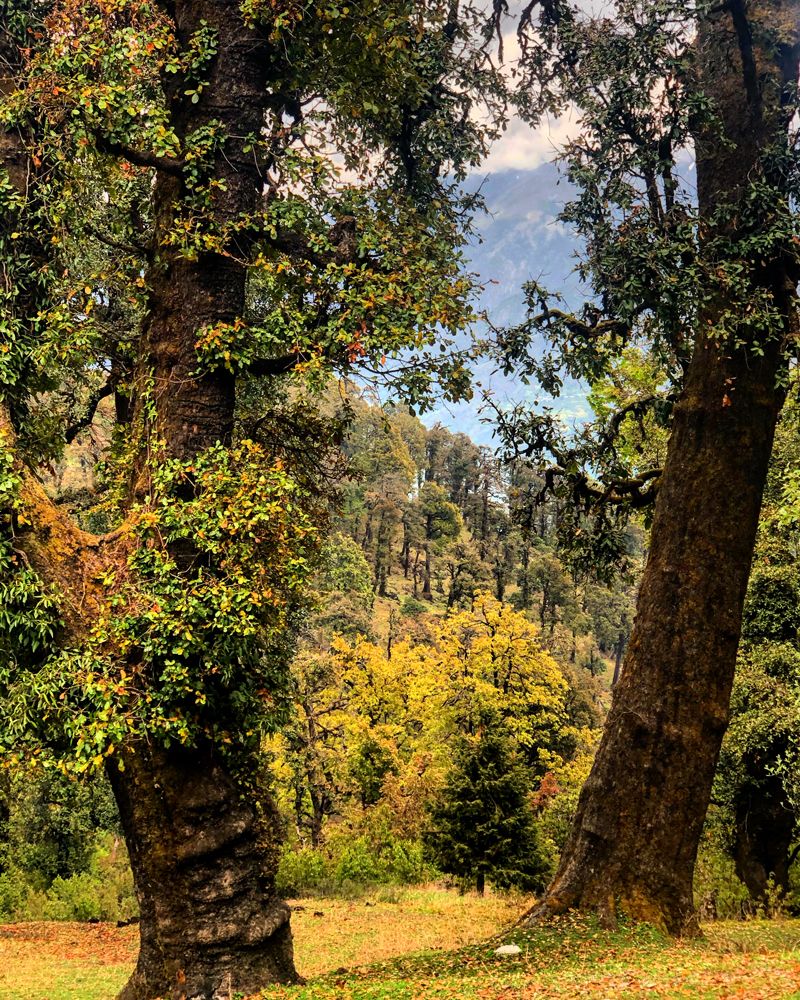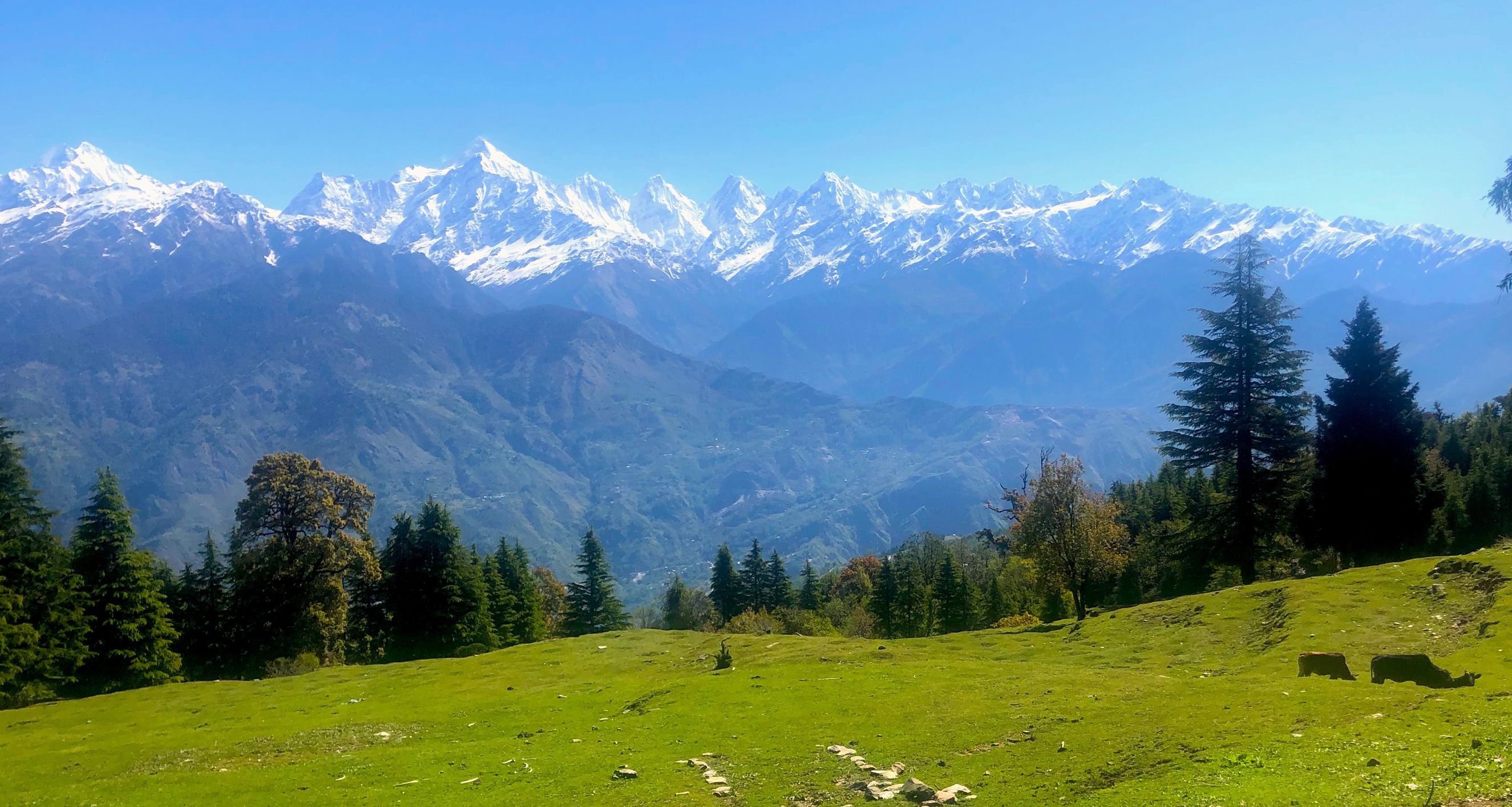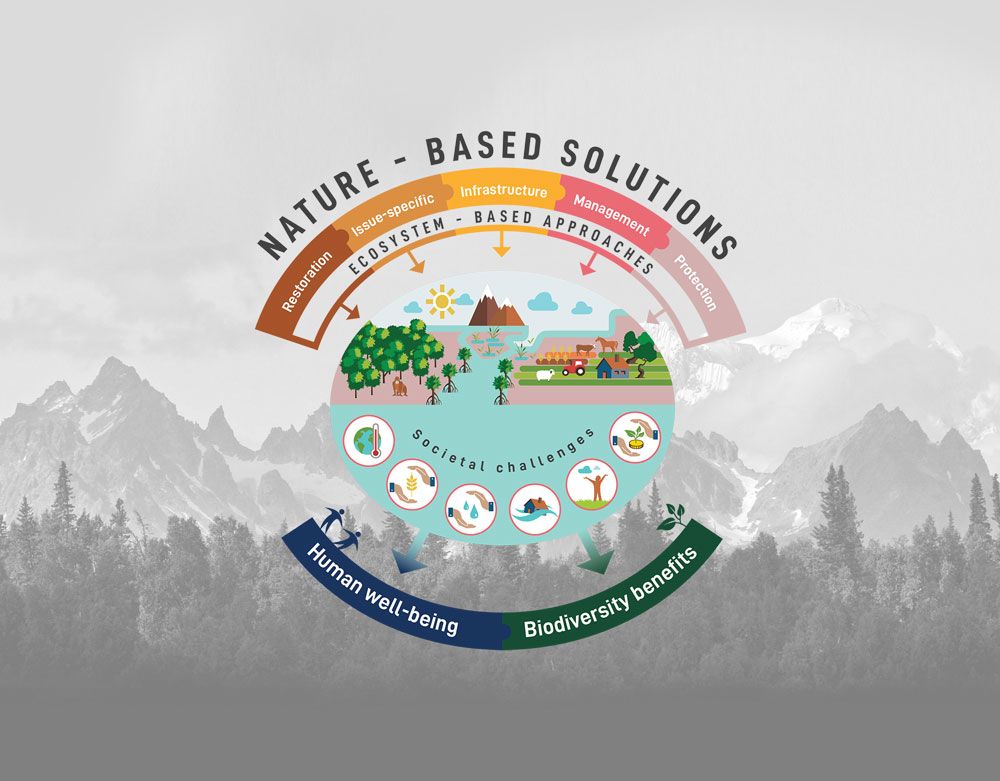

Nature-based Solutions
As Nobel prize-winning biologist, Karl von Frisch once rightly observed, “The bee’s life is like a magic well: the more you draw from it, the more it fills with water.” {von Frisch, K. (1950). Bees: Their Vision, Chemical Senses, and Language. Cornell University Press}. Much like the wizard’s swish, the bee’s peculiar waggle is choreographed specifically to point to nectar and pollen. These selfless, industrious black and yellow pollinator soldiers impact the entire earth. Various historic civilisations and prevalent communities the world over put the bee on the pedestal of catalysing life. Like many seemingly small creatures, bees perform one of the greatest tasks for other living beings. For every four morsels we put into our mouths, bees are responsible for the natural production of a whopping three via pollination. But bee numbers have declined drastically in recent decades owing to the climate crisis.
When Himalayan Essence began working in the Himalaya, we found that the farmers’ greatest allies, the bees (specifically the Apis Cerana Indica) were steadily dwindling in numbers. As a result, Himalayan Essence first undertook apiculture to bring back the bees as nature’s own pollination magicians. In this journey, we’ve realised that eventually, a net-zero India by 2070 or a net-zero planet, will only be possible if small-holder farmers aim for net-zero farms.
Climate change has been successfully mitigated in small but significant instances by replenishing and restoring the fast-depleting natural ecosystems of our planet. It is a task that would not only help bring back the bees, but also the biodiversity of ecosystems, making them more resilient for future planetary upheavals.
The climate crisis, in essence, is a nature crisis. And the rupture in ecological balance has impacted the Himalaya too.
The answers to the conundrums of restoring and protecting our natural world lie in nature too. Nature-based solutions offer the unique path of simultaneously pursuing planetary and human well-being. From expanding nature reserves to restoring ecosystems rich in species such as the Himalaya, nature-based solutions can boost biodiversity, reabsorb carbon, and address the need for local livelihood, and nutrition for consumers.
The International Union for Conservation of Nature (IUCN) defines Nature-based Solutions (NbS) as “actions to protect, sustainably manage, and restore natural or modified ecosystems, that address societal challenges effectively and adaptively, simultaneously providing human well-being and biodiversity benefits.”
We at Himalayan Essence realised that without improving the propensity for better livelihood for small-scale Himalayan farmers and connecting their produce to markets, the restoration of the Himalayan natural ecosystem would be myopic and unsustainable.
We collaborate and co-create with nature through the NbS approach and train farmers in states across the Himalaya to replicate the model and savour its sustained success. In so doing, we have discovered that the traditional Himalayan Way of Life already derives its approach to life and livelihood from mother nature. The Uttarakhand bee-whisperers, for example, use only sound modulation to migrate entire colonies of bees from one place to another! We unify such unique traditions of the people of Himalaya with the modern science of climate resilience, nutrition and scientific practices, yielding a process that is good for the planet and good for people.


Nature-based Solutions
As Nobel prize-winning biologist, Karl von Frisch once rightly observed, “The bee’s life is like a magic well: the more you draw from it, the more it fills with water.” {von Frisch, K. (1950). Bees: Their Vision, Chemical Senses, and Language. Cornell University Press}. Much like the wizard’s swish, the bee’s peculiar waggle is choreographed specifically to point to nectar and pollen. These selfless, industrious black and yellow pollinator soldiers impact the entire earth. Various historic civilisations and prevalent communities the world over put the bee on the pedestal of catalysing life. Like many seemingly small creatures, bees perform one of the greatest tasks for other living beings. For every four morsels we put into our mouths, bees are responsible for the natural production of a whopping three via pollination. But bee numbers have declined drastically in recent decades owing to the climate crisis.
When Himalayan Essence began working in the Himalaya, we found that the farmers’ greatest allies, the bees (specifically the Apis Cerana Indica) were steadily dwindling in numbers. As a result, Himalayan Essence first undertook apiculture to bring back the bees as nature’s own pollination magicians. In this journey, we’ve realised that eventually, a net-zero India by 2070 or a net-zero planet, will only be possible if small-holder farmers aim for net-zero farms.
Climate change has been successfully mitigated in small but significant instances by replenishing and restoring the fast-depleting natural ecosystems of our planet. It is a task that would not only help bring back the bees, but also the biodiversity of ecosystems, making them more resilient for future planetary upheavals.
The climate crisis, in essence, is a nature crisis. And the rupture in ecological balance has impacted the Himalaya too.
The answers to the conundrums of restoring and protecting our natural world lie in nature too. Nature-based solutions offer the unique path of simultaneously pursuing planetary and human well-being. From expanding nature reserves to restoring ecosystems rich in species such as the Himalaya, nature-based solutions can boost biodiversity, reabsorb carbon, and address the need for local livelihood, and nutrition for consumers.
The International Union for Conservation of Nature (IUCN) defines Nature-based Solutions (NbS) as “actions to protect, sustainably manage, and restore natural or modified ecosystems, that address societal challenges effectively and adaptively, simultaneously providing human well-being and biodiversity benefits.”
We at Himalayan Essence realised that without improving the propensity for better livelihood for small-scale Himalayan farmers and connecting their produce to markets, the restoration of the Himalayan natural ecosystem would be myopic and unsustainable.
We collaborate and co-create with nature through the NbS approach and train farmers in states across the Himalaya to replicate the model and savour its sustained success. In so doing, we have discovered that the traditional Himalayan Way of Life already derives its approach to life and livelihood from mother nature. The Uttarakhand bee-whisperers, for example, use only sound modulation to migrate entire colonies of bees from one place to another! We unify such unique traditions of the people of Himalaya with the modern science of climate resilience, nutrition and scientific practices, yielding a process that is good for the planet and good for people.

Regenerative Agriculture
The intrinsically nature-based Himalayan Way of Life has the power to mitigate grave global issues such as food security, climate change, water security, human health, disaster risk, and ultimately benefit social and economic development. At the heart of this way of life is, what climate scientists now call, Regenerative Agriculture.
We work with Himalayan farmers to ensure that the use of nature-based manure and soil rejuvenation techniques are scaled. We brought into the fold natural plant medicines and soil healing agents, and trained the farmers in their application. At all times, our motto has been to disincentive the farmers from turning (back) to chemical-based fertilisers or medicines for their crop. In the Indian Himalayan Region, farming is a way of life, not a mere siloed transaction. Local farming methods have supported biological and cultural diversity whilst sustaining economic activity.
Our belief and mantra for a healthier planet has been to restore the five natural elements that form the basis of all life by encouraging the use of regenerative, nature-based agricultural solutions at scale. We plough back the knowledge of local traditions and natural contexts, and incorporate modern technology, tools and markets throughout the value chain. By learning, distilling and translating into our business practice this Himalayan Way of Life, we at Himalayan Essence are working towards restoring the balance of the Himalayan ecosystem.

Conscious Consumption
In our journey of learning, experimentation, exploration and innovation, the local communities across the Himalaya are our willing and able partners. Through our products, we hope that markets and consumers across the globe will join us in this mission. Through shared purpose and collective action, we can restore one of the most important natural ecosystems on the planet – the Himalaya.
Whether you are a farmer, a retailer, or a consumer, contributing towards natural ecosystem conservation and restoration is within your power and reach.
By providing the Himalayan farmers with access to market via agile supply chains, we make it possible for them to realise and earn the true value of their richly flavourful, nutritious, and sustainably grown produce, ultimately providing them with better livelihood as well as on-boarding them on our purpose for planetary action.
The need for nature-based regenerative agricultural transitions is extensively due to the growing demand on resource-intensive agricultural products owing to burgeoning global populations. In our experience, this challenge can be met with a shift towards planet-compatible consumption. The food consumption shift towards nutritious food produced with regenerative farming practices can further minimize the negative impact on the planet’s natural elements, whilst lowering food wastage.
At Himalayan Essence we believe that conscious consumption is not only about planetary health, but also about individual health and well-being – our own, of our families, of our loved ones, and of society at large. By bringing chemical-free, and nutritious produce grown with regenerative agricultural methods to a market near you, we ensure that the food on everyone’s plate has exceptional flavour and is wholesome in equal measure.
We help complete this transformational food production and consumption journey with a transparent and responsible supply chain. In our deployment of blue-green infrastructure, we have incorporated cutting-edge technology and analytics into all parts of the value chain. These measures make it possible to collaborate with our stakeholders to improve sustainable sourcing, reduce post-harvest losses, enhance safety and quality of products, and ensure that we facilitate the consumer with informed dietary decisions.

Committed to the Planet
Successfully transitioning the food and land use system to nature-positive development is challenging, but from our own experience, we attest that it helps to lead a more resilient, and healthier life.
Himalayan Essence is inspired by five of 17 UN Sustainable Development Goals and we aspire to hold them as our talisman in our work:
GOAL 2: ZERO HUNGER
Malnutrition and extreme hunger are key hurdles in the path towards sustainable development. Both are inescapable traps that cause low productivity and diseases, rendering people incapable of eking out and improving livelihood. By promoting sustainable agriculture, we work towards ending hunger, achieving food security and improving nutrition for all.
Specific targets:
- Target 2.3: Double the productivity and incomes of small-scale food producers
- Target 2.4: Sustainable food production and resilient agricultural practices
- Target 2.5: Maintain the genetic diversity in food production
GOAL 3: GOOD HEALTH & WELL-BEING
Weaning farmers away from using chemicals in their farms and using natural solutions and medicines ensures that the food is nutrient-rich and chemical free. We at Himalayan Essence aim to ensure healthy lives and promote wellbeing for all at all ages.
Specific target:
Target 3.9: Reduce illnesses and deaths from hazardous chemicals and pollution
By 2030, substantially reduce the number of deaths and illnesses from hazardous chemicals and air, water and soil pollution and contamination.
GOAL 12: RESPONSIBLE CONSUMPTION AND PRODUCTION
To ensure sustainable consumption and production patterns.
We recognise the need for urgency to reduce the ecological footprint of usage by changing the way we grow our produce. This directly results in the way we all consume – sustainably and consciously.
Specific targets:
- Target 12.1: Implement the 10-year sustainable consumption and production framework
- Target 12.6: Encourage companies to adopt sustainable practices and sustainability reporting
- Target 12.8: Promote universal understanding of sustainable lifestyles
GOAL 13: CLIMATE ACTION
The decade between 2010 - 2019 was the warmest decade recorded in history. Currently climate change is affecting the global community in each country of the world. It impacts not only national economies, but also lives and livelihoods, especially those in vulnerable conditions. By providing access to resilient infrastructure, contributing to local development by providing local farmers progressively better livelihoods, and taking urgent action to mitigate climate change and its impact through nature-based regenerative agriculture, we at Himalayan Essence are committed to sustained climate action.
Specific target:
Target 13.3: Build knowledge and capacity to meet climate change
GOAL 15: LIFE ON LAND
Preserving biodiversity of forest, desert, and mountain eco-systems as a percentage of total land mass can be achieved by restoring degraded forests and land lost to drought and flood. We do so by protecting and carrying out restorative measures using nature-based solutions. These solutions also include seeking help from nature’s transformation actors such as the bees to restore the local natural landscapes to promote a more sustainable use of the Himalayan ecosystem, restoring forest lands, and halting and possibly reversing land degradation and biodiversity loss.
Specific targets:
- Target 15.1: Conserve and restore terrestrial and freshwater ecosystems
- Target 15.2: End deforestation and restore degraded forests
- Target 15.3: End desertification and restore degraded land
- Target 15.4: Ensure conservation of mountain ecosystems
- Target 15.5: Protect biodiversity and natural habitats
Delve Deeper into Himalayan Natural Ecosystem, Nature-Based Solutions, Regenerative Agriculture, Himalayan Communities and Sustainable Development Goals to better understand how you too can practice and support them.

